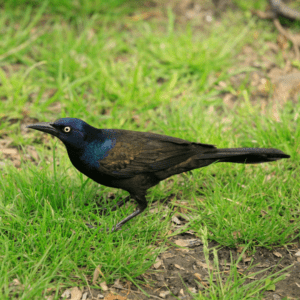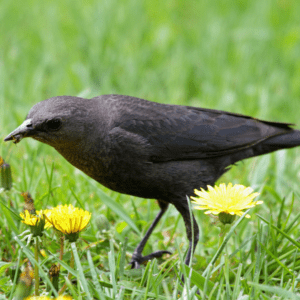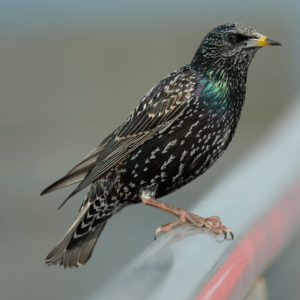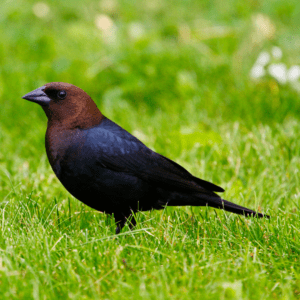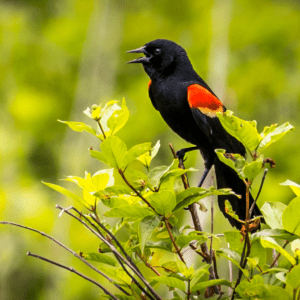You probably see black birds every day. But are those black birds… blackbirds?
Most of the black-colored birds you see on a daily basis in North America do not actually have “blackbird” in their names.
Instead, the big ones are usually vultures, the medium-sized ones are most often crows, and the smaller ones are likely to be starlings or cowbirds.
Telling apart different species of black-colored birds is a challenge for birdwatchers of all experience levels. However, each species has a few defining traits.
In this bird identification guide, we’ll review the basics of recognizing ravens, crows, and other common black-colored birds.
Telling Apart Different Black-Colored Birds
Here’s a closer look at common black-colored birds, listed by size. The distinguishing traits described in the right-hand column can be used to tell one species from another.
Black-Colored Bird | Average Adult Length | Distinguishing Traits |
Common Raven
| 25” |
|
American Crow
| 17.5” |
|
Common Grackle
| 12” |
|
Brewer’s Blackbird
| 9” |
|
European Starling
| 8.5” |
|
Brown-headed Cowbird
| 7.5” |
|
Red-winged Blackbird
| 7.25” |
|
Common Types of North American Black-Colored Birds
The most common black-colored bird species of North America include:
- Vultures: turkey vulture, black vulture
- Corvids: American Crow, common raven
- New World Blackbirds: red-winged blackbird, Brewer’s blackbird, common grackle, brown-headed cowbird
- Starlings: European starling
The list above isn’t comprehensive, but covers most of the species that you’re likely to see in abundance or in urban environments.
In this guide, we’re focusing on small and medium-sized birds. But first, a note on vultures: when you see a large, black bird circling high up in the sky, there’s a good chance that it’s a turkey vulture or a black vulture.
From a distance, it’s easy to confuse the appearance of vultures, crows, and ravens, but their flight styles are helpful for identification. Vultures spend more time soaring slowly at greater heights as they slowly search the landscape (using a keen sense of smell) for a carcass to feed on.
What to Look for When Identifying Birds
Birders use the following characteristics to identify species:
- Size and shape
- Color
- Sounds
- Behavior
- Habitat
Any one of the above categories can be useful in telling one species from another. For example, using size, you may learn to recognize that ravens are slightly bigger than crows. Or, using color, you may learn to quickly spot a brown-colored head and know that what you’re seeing is a brown-headed cowbird.
Males Vs Females and Mature Birds vs Juveniles
Identifying birds would be easier if every member of a species looked exactly the same. However, males and females sometimes look like entirely different species.
With ravens, crows, and starlings, males and females look nearly identical.
However, in general, male songbirds are more colorful than females. Of the black-colored birds discussed in this guide, this rule holds true for grackles, brewer’s blackbirds, cowbirds, and red-winged blackbirds. In these species, females tend to look more brownish and plain.
Along with gender confusion, it’s easy to be thrown for a loop by a young bird.
Birds that have left the nest but haven’t yet developed adult plumage are known as juveniles. Juveniles sometimes look odd and unfamiliar. Among black-colored birds, juveniles are often brown or gray, with color patterns that are streaky and undeveloped.
Crow Vs Raven
Crow
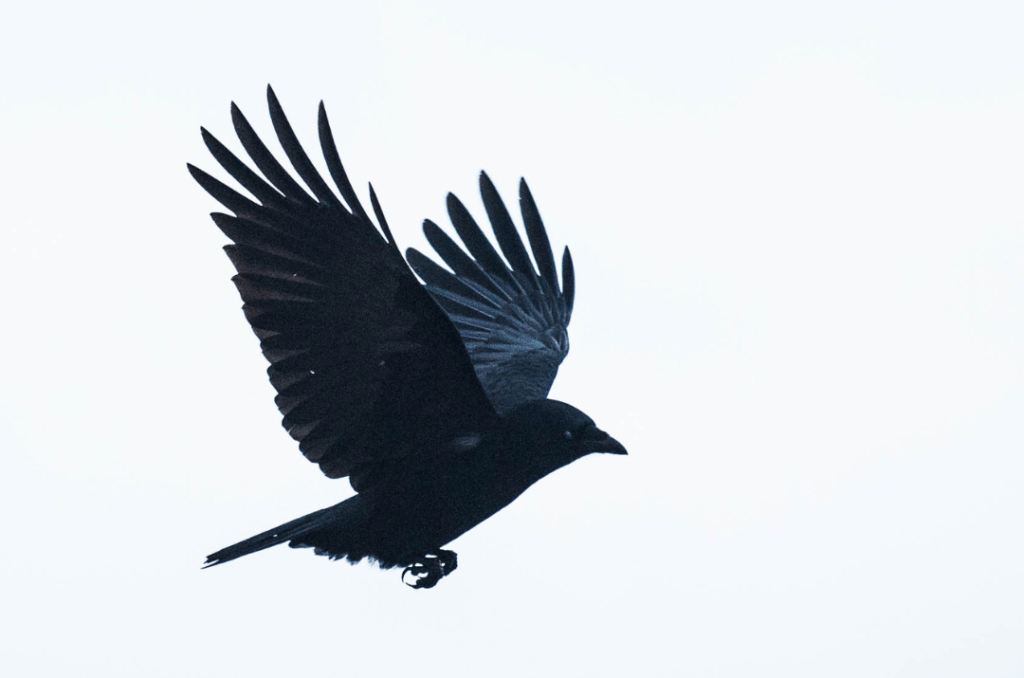
Raven
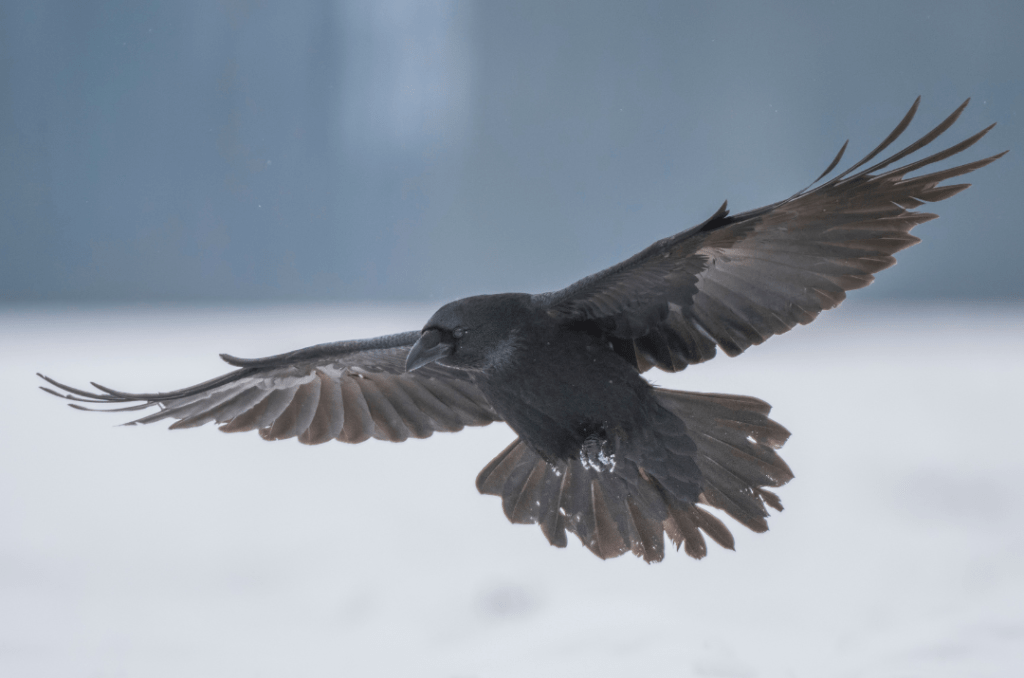
Is that a raven or a crow? At first glance, the two species seem nearly identical.
Here are a few tips for differentiating ravens and crows:
- Ravens are larger—as big as red-tailed hawks
- Raven bills are thicker and more curved
- Raven neck feathers are often scruffy and shaggy
- Ravens make low croaking sounds, crows make shrill cawing sounds
- Ravens are more likely to be seen solo or in pairs, crows are more likely to travel in groups
- In flight, ravens do more soaring, crows do more flapping
- Crows are more common in urban and suburban settings
Ravens and Crows Vs Smaller Black-Colored Birds
Compared to grackles, starlings, cowbirds, and blackbirds, ravens and crows are significantly larger. They’re longer and heftier.
Ravens and crows are also entirely black. One of the fastest ways to identify the other common black-colored birds is to look for the non-black colorings described above, such as the brown head of a cowbird.
If you find yourself stumped, remember that differences between males and females and juveniles vs adults are common sources of confusion.
To help progress your bird ID skills, create an iNaturalist account. On iNaturalist, you can upload wildlife photos and crowdsource the ID process. Or, download the Merlin bird app. Using the Merlin app, you answer a few questions about a bird and the app produces ID suggestions.

Kelly is an environmental science writer, naturalist, and birdwatcher. Kelly holds a master’s degree in environmental policy and has worked as an environmental analyst, urban planner, and professor of environmental planning.



